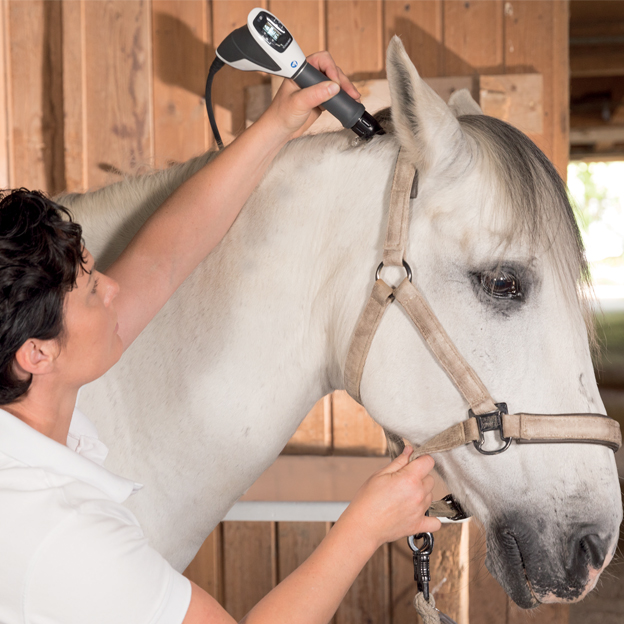Equine Therapy for Injury Healing: Exactly How Equines Help Heal Emotional Wounds
Equine Therapy for Injury Healing: Exactly How Equines Help Heal Emotional Wounds
Blog Article
Examining the Performance of Laser Therapy in Horse Therapy for Injury Rehabilitation
The assessment of laser therapy's efficiency in equine injury recovery pivots on several aspects, consisting of healing time, pain mitigation, and tissue regeneration. Vets regularly observe premium results with laser treatment contrasted to traditional techniques, positioning it as an essential element in equine care.
Recognizing Laser Treatment
Laser therapy has become a crucial tool in veterinary medication, specifically in the treatment of equine conditions. Recognized for its non-invasive nature and efficiency, laser therapy involves the application of details wavelengths of light to boost cells repair work and decrease inflammation. This healing technique is increasingly preferred for its capability to speed up the recovery procedure in horses struggling with a selection of bone and joint injuries and chronic conditions.
The primary system behind laser treatment is its ability to enhance mobile features. Additionally, laser therapy advertises vasodilation, boosting blood circulation and oxygen delivery to damaged tissues, therefore quickening recovery.
In equine medicine, laser therapy is especially beneficial for conditions such as tendonitis, osteoarthritis, and wound recovery. The strategy is admired for its pain-relieving properties, allowing horses to restore wheelchair and feature much more swiftly. Vets additionally value its marginal side results contrasted to various other therapy methods, making it a dependable and safe option for equine care.

Exactly How Laser Treatment Works

Upon absorption, these photons cause a series of biochemical changes, boosting mitochondrial feature and resulting in increased adenosine triphosphate (ATP) manufacturing. This increase in ATP accelerates mobile metabolic process, promoting cells repair service and regeneration. In addition, laser therapy regulates inflammatory actions by impacting cytokine degrees and minimizing oxidative stress, therefore relieving discomfort and swelling.
One more substantial element of laser treatment is its function in boosting microcirculation. The therapy advertises vasodilation, enhancing blood circulation and oxygen shipment to broken tissues (Equine Therapy). This promotes the removal of cellular particles and supports the expansion of fibroblasts and collagen synthesis, crucial for injury healing
Clinical Evidence
The effectiveness of laser treatment in equine therapy has actually been confirmed through different scientific research studies, showcasing its healing possible throughout a variety of problems. A research study carried out by click for source Turner et al. (2012) demonstrated that equines treated with low-level laser therapy (LLLT) for tendon injuries exhibited sped up recovery compared to those getting conventional treatments.
In a similar way, research study by Johnson and associates (2015) concentrated on equine muscular tissue injuries, disclosing that laser therapy dramatically sped up muscular tissue fiber regrowth and minimized muscle mass tightness. These findings were substantiated by histological analyses revealing enhanced muscle cells company. Additionally, medical assessments have actually revealed that laser therapy can alleviate persistent conditions such as osteoarthritis. A research by Smith et al. (2018) reported that equines with osteoarthritic joints experienced noteworthy discomfort relief and increased variety of movement following a program of laser therapy sessions.
Vet Insights

Veterinarians also Visit This Link appreciate the flexibility of laser therapy. It can be utilized for a variety of conditions, from shallow wounds to deeper musculoskeletal injuries. Dr. Emily Brown highlights its utility in treating problems like tendonitis and osteo arthritis, where standard treatments usually fail. She explains that laser therapy can be tailored to the specific needs of each horse, ensuring optimum end results.
Furthermore, vets value the capacity to integrate laser therapy with various other therapy modalities. This multimodal approach can boost general therapy efficiency, supplying an extensive solution for equine recovery. Such endorsements from skilled specialists highlight the growing approval and application of laser therapy in equine medication.
Practical Considerations
A key element of executing laser treatment in equine treatment entails comprehending the practical factors to consider that ensure its effectiveness and safety. Firstly, it is critical to choose the ideal laser gadget, as numerous types vary in wavelength, power, and penetration deepness. Equine Therapy. Veterinarians need to be well-versed in these specifications to tailor treatment methods effectively to every injury kind
Furthermore, the regularity and duration of laser therapy sessions require careful planning to optimize restorative benefits while lessening any type of possible additional hints adverse impacts. Regular monitoring of the horse's response to therapy can assist required modifications in the treatment routine. Establishing a risk-free and regulated setting throughout therapies is also necessary to protect against unintentional exposure to laser discharges, which might damage both the steed and the trainer.
Training and accreditation of employees carrying out laser treatment are paramount to guarantee proper method and to support security criteria. Additionally, maintaining accurate records of each session, including laser settings and observed outcomes, is vital for evaluating the overall efficiency of the treatment and for making data-driven decisions.
Conclusion
Laser treatment has arised as an efficient modality in equine injury recovery, providing substantial advantages in recovery time, discomfort relief, and cells healing. For optimum results, continual monitoring and customized therapy protocols stay important in leveraging the complete potential of laser treatment in equine care.
Report this page